Fiberglass Windows: A Sustainable Choice in Non-Residential and Multi-Family Buildings
Fiberglass Window Installation Methods and Details
Part of the beauty of fiberglass windows is that the units can be fully fabricated and delivered to the site pre-finished, pre-glazed, and ready to install. Manufacturers have continued to make the installation process easier by offering standardized methods of installing fiberglass composite windows in either new construction or renovation projects. Some of the standardized types of installation are described and illustrated below:
Integral fin. (See Figure 16.) The integral fin installation method relies on a continuous fiberglass fin or nailing flange that runs around the entire perimeter of the window unit. This feature, allows the window frame to be integrated into the building's weather-resistant barrier using standard installation and fastening methods and flashing tapes. These continuous perimeter nailing fins are used when construction methods permit window and door units to be installed from the exterior prior to the application of exterior cladding, such as lap siding, brick veneer and stucco. The fins provide the surface for nails or other fasteners to be used to anchor the entire unit in place. This method has proven reliable not only in fiberglass windows, but in many other window type applications including aluminum-clad wood and vinyl windows.
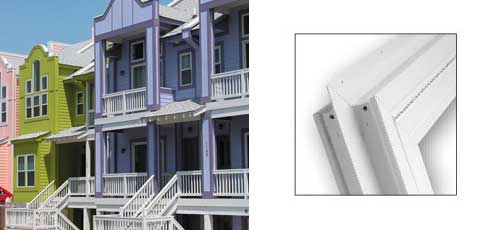 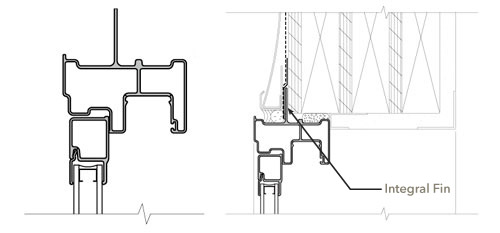 |
|
Figure 16: Integral fin fiberglass windows installed in Bermuda Bay condominiums Images courtesy of Pella Corporation |
|
Â
Block frames. The block frame uses a standard frame on all sides of the window unit that can be readily inserted into a rough opening in construction. This standardized frame provides a variety of attachment and installation options for both new construction and renovation projects. Windows can be installed in wood and steel frame openings using optional slide-in fins, in masonry openings using installation clips, jamb screws or receptors, or in window replacement situations using a variety of options. Some of the standard choices are discussed further below:
- Block frame with standard fin or offset fin. (See Figure 17.) Similar to the integral fin, the standard fin or offset fin can be used with the block frame to provide a continuous attachment method that allows the window frame to be integrated into the building's weather-resistant barrier. These slide-in fins are often used in lieu of integral fins when many windows are being joined together in combinations. It allows the fin to be used only where needed, eliminating the need to trim the integral fin in the field. The offset nailing fin is designed for use in new construction with thin exterior claddings like stucco, thus allowing the window to be located more to the interior.
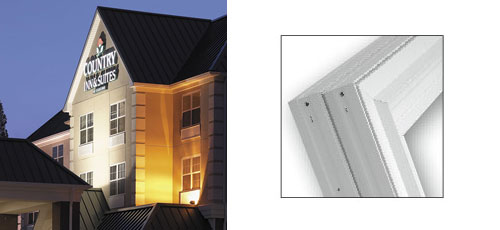
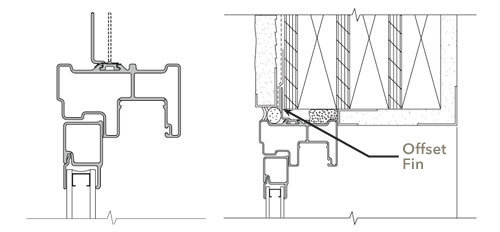
Figure 17: Block frame with offset fin to accommodate fa�ade materials used on Country Inn and Suites. Standard fin shown in dashed lines.
Images courtesy of Pella Corporation
- Block frame with installation clips. (See Figure 18.) This method is intended for new construction or window replacement where wall conditions or construction sequence require installation from inside the building. Unlike fins which are continuous, clips are typically spaced at 18" on center. The clips are secured to the frame and then nailed or otherwise anchored to the wall construction. Because the clip extends beyond the interior of the window frame, it must be covered with gypsum board or trim to conceal it from view.
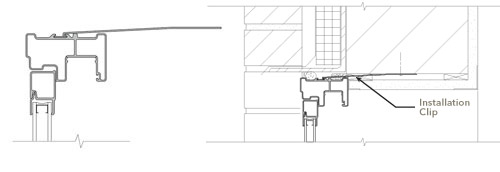 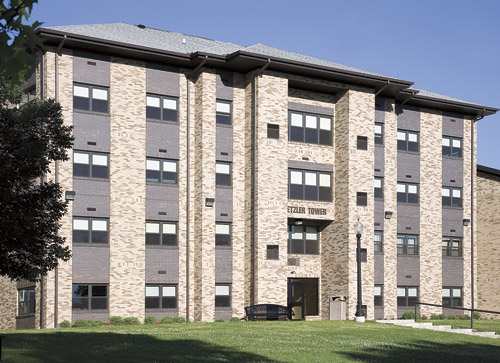 |
|
Figure 18: Block frame with installation clip used in dormitories at Walsh University Images courtesy of Pella Corporation |
|
- Block frame with screw attachment. (See Figure 19.) Like the installation clip, this method of attachment is typically used when the windows must be installed from inside the building. In this situation, screws penetrate the frame and secure the unit to the building. Since anchorage is through the frame, it works well in solid masonry walls where there are no additional interior finishes besides the block masonry.
  |
|
Figure 19: Block frame with screw attachment used at the Fred and Sara Machetanz Elementary School Images courtesy of Pella Corporation |
|
- Block frame with receptor and subsill. (See Figure 20.) Receptors are often used in multistory buildings requiring installation from the interior or when a more robust installation method is desired. First, the subsill is anchored to the sill of the window opening. Then the receptors are anchored to the opening at the head and jambs. Finally, the new window is installed on the top of the subsill and within the receptor system from the interior. Together, these multiple pieces act to assure that the integrity of the window unit and its installation is maintained.
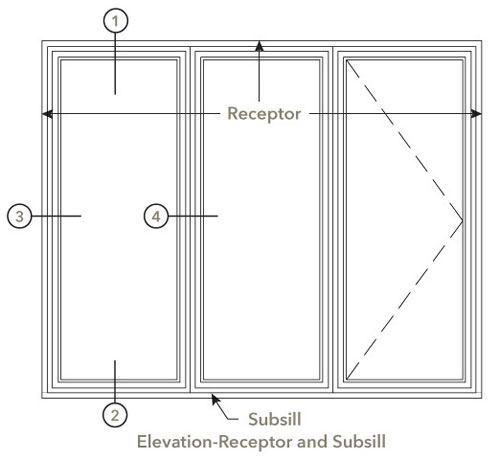 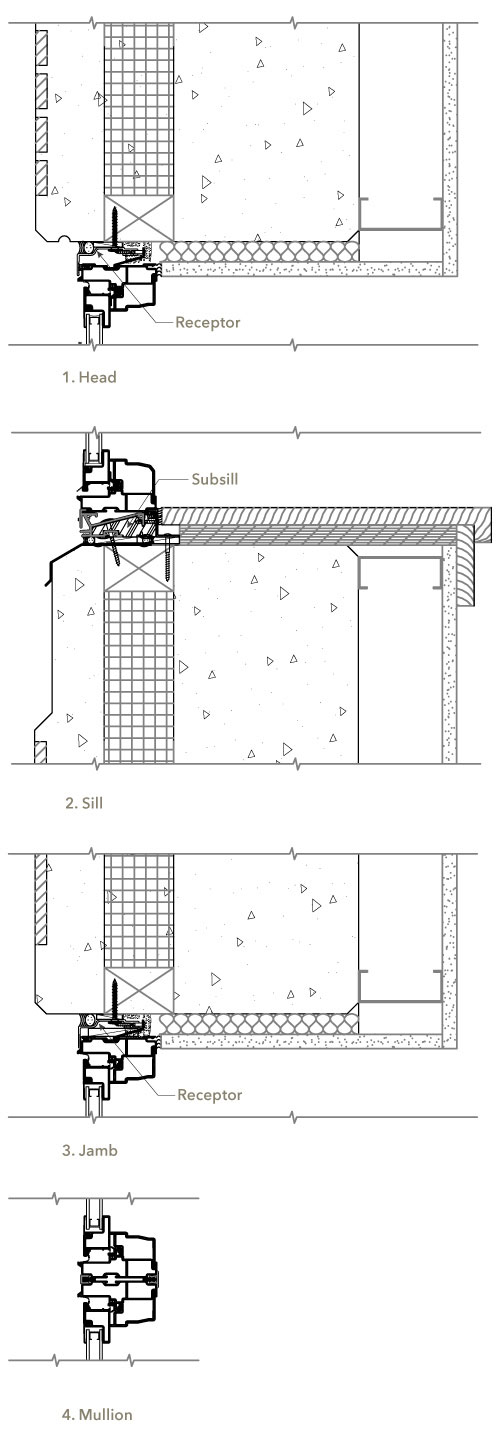 |
|
Figure 20: Block frame with receptor and subsill installation details Images courtesy of Pella Corporation |
|









